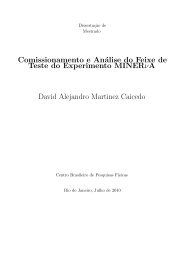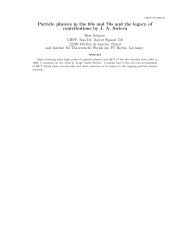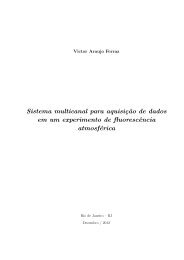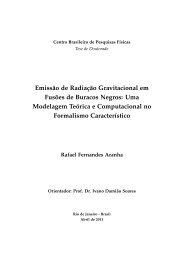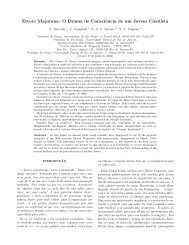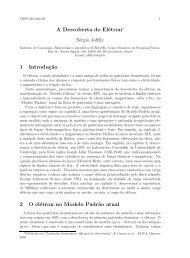Strength of composite repair using different diamond ... - Cbpfindex
Strength of composite repair using different diamond ... - Cbpfindex
Strength of composite repair using different diamond ... - Cbpfindex
Create successful ePaper yourself
Turn your PDF publications into a flip-book with our unique Google optimized e-Paper software.
2004, Bonstein et al 2005), is a further evidence that<br />
micromechanical interlocking may be the main bonding mechanism<br />
underlying <strong>composite</strong> <strong>repair</strong>.<br />
However, it is worth mentioning that the increase in roughness<br />
does not necessary means increasinged surface area for adhesion. If<br />
we compare the roughness produced by the aluminum oxide and<br />
coarse <strong>diamond</strong> bur one can note that they are similar, but the<br />
resulting roughness pattern produced by these two procedures are<br />
quite <strong>different</strong> under SEM evaluation. A more regular pattern <strong>of</strong><br />
roughness was produced by the coarse <strong>diamond</strong> bur with<br />
unidirectional peaks and valleys, while a more three-dimensional<br />
roughness was produced by the aluminum oxide sandblasting with<br />
variations in the peaks and valleys heights and self-similar features.<br />
SEM images <strong>of</strong> earlier studies (Lucena-Martín et al 2001, Bonstein et<br />
al 2005, Papacchini et al 2007, Dall’oca et al 2008, Rathke et al 2009,<br />
Yesilyurt et al 2009, Costa et al 2010)11,14,15,18,22,26,32 agree with<br />
the present investigation, demonstrating that aluminum oxide<br />
sandblasting is able to produce more micro-retentive features. The<br />
image treatment indicates One may speculate that the available area<br />
for adhesion area produced by aluminum oxide isseems to be much<br />
higher than that produced by the coarse <strong>diamond</strong> bur, despite the<br />
similar Ra roughness produced by both clinical approaches. Besides<br />
that, one cannot rule out the fact that a smear layer is produced when<br />
the <strong>composite</strong> is roughened with a <strong>diamond</strong> bur, finding not observed<br />
in the aluminum oxide-treated surfaces (???). Whether this has an<br />
important effect on the differences observed is yet to be investigated.<br />
Previous studies demonstrated that the use <strong>of</strong> an adhesive after<br />
mechanical roughening has a significant effect on the <strong>repair</strong> bond



